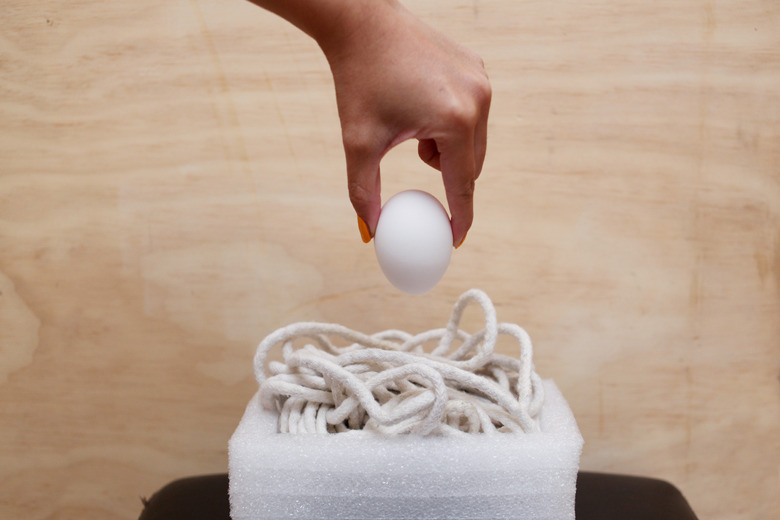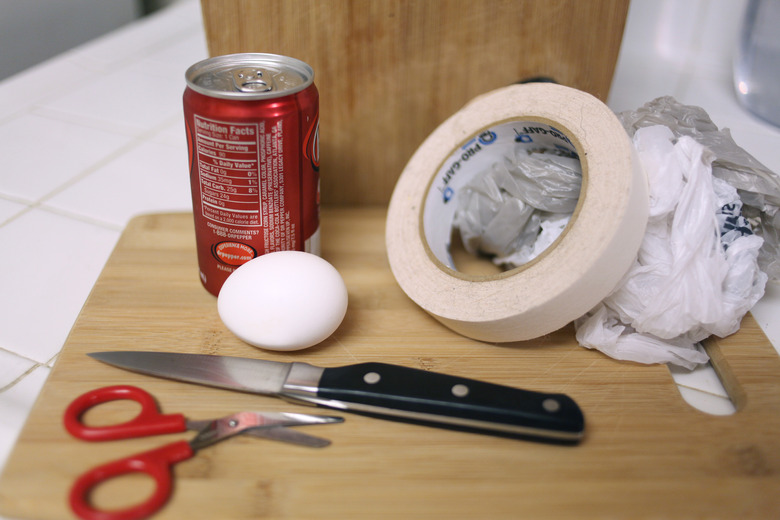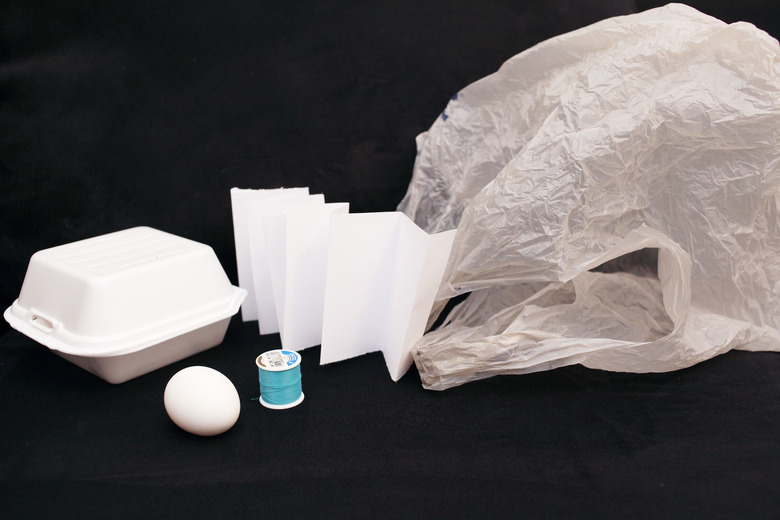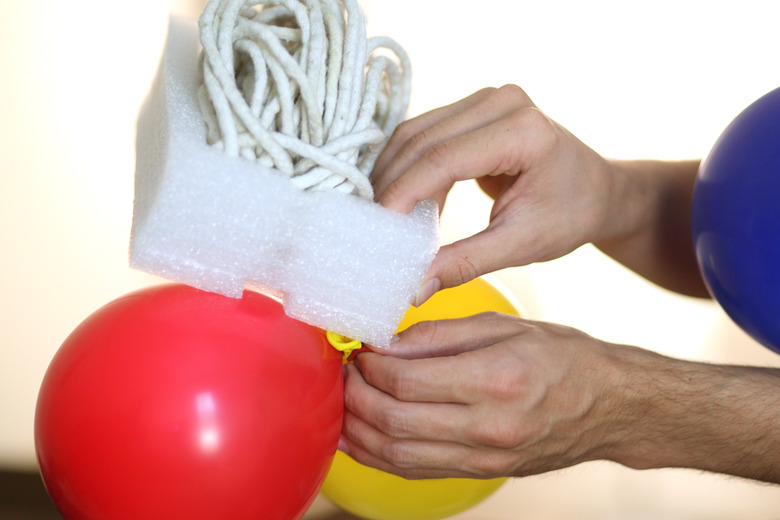Egg Drop School Projects
One science idea that covers physics and design for students is the egg-drop experiment. Students must design a container for an egg that will withstand being dropped from a given height. The goal is for students to distribute the force of impact evenly around the shell and to create a project that will slow the fall.
Soda-Can Parachute
Soda-Can Parachute
For this egg-drop attempt, you will need a knife or scissors, tape, bubble wrap or plastic bags and an empty soda can. Start by carefully wrapping your egg in the bubble wrap or plastic bags to provide padding for your egg. You will need an adult to help cut an "I"-shape slice in the can. This will allow you to gently place your wrapped egg into the can. Use your tape to close the opening in the can. To make the parachute, bend the tab at the top of the can up to allow you to slip through two handles of a plastic grocery bag. Make the handles into an "O" shape and slip the rest of the bag through the "O." Pull it tight so there is an opening at the bottom of the bag to allow air through. Now drop your parachute from a high point and see how it works!
Accordion Style
Accordion Style
For this project, students create a device where the egg is encased in paper that has been folded like an accordion. The theory is that upon impact, the force will be absorbed when the "accordion" folds. This is assuming that the project lands upright. Start with a Chinese food take-out box. The egg will be housed and secured at the bottom of the box. Under the take-out box, create an accordion with sturdy paper, folding it back and forth until it is the height you desire. Coming out from each side of the take-out box, design and create landing gear to help the egg land safely. A parachute completes the design. Tie a piece of string to each top corner of the box. Attach each piece of string to a bag to create a parachute to finish your creation.
Balloons
Balloons
This design uses balloons and a basket to ensure the egg's survival. Begin by creating a nest of string or twine. Using a funnel will allow students to create a pyramid-shape nest. Fill the bottom of the next with a soft material for the egg to sit on. Students will then attach four filled balloons to the bottom of the nest. Using dowels, students create a frame in an "x" shape coming off the top of the nest. The dowels will be attached to a piece of heavy fabric to create a parachute. The goal is for the project to land on the balloons, softening the impact for the egg.
Cite This Article
MLA
Broaddus, Kimberlee. "Egg Drop School Projects" sciencing.com, https://www.sciencing.com/egg-drop-school-projects-12743348/. 24 March 2010.
APA
Broaddus, Kimberlee. (2010, March 24). Egg Drop School Projects. sciencing.com. Retrieved from https://www.sciencing.com/egg-drop-school-projects-12743348/
Chicago
Broaddus, Kimberlee. Egg Drop School Projects last modified March 24, 2022. https://www.sciencing.com/egg-drop-school-projects-12743348/



